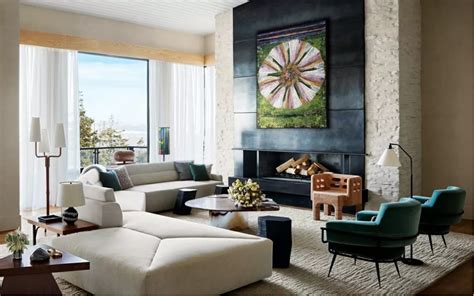Delve into the world of beautiful interior design as we uncover the essential elements that make a space truly captivating. From color schemes to furniture choices, lighting to spatial layout, this discussion will provide a comprehensive guide to creating visually stunning interiors.
 Let's begin our journey into the realm of interior design excellence, where every detail contributes to the overall beauty and harmony of a space.
.
Let's begin our journey into the realm of interior design excellence, where every detail contributes to the overall beauty and harmony of a space.
.
 Let's begin our journey into the realm of interior design excellence, where every detail contributes to the overall beauty and harmony of a space.
Let's begin our journey into the realm of interior design excellence, where every detail contributes to the overall beauty and harmony of a space.
Elements of Beautiful Interior Design
Interior design is a multifaceted art that involves various elements working together to create a visually appealing space. From color schemes to lighting, textures, and patterns, each element plays a crucial role in enhancing the beauty of a room.Color Schemes
Color schemes are essential in interior design as they set the overall mood and atmosphere of a space. By carefully selecting colors that complement each other, designers can create harmonious and visually pleasing environments. For example, using a monochromatic color scheme can create a sense of simplicity and elegance, while contrasting colors can add drama and depth to a room.Lighting
Lighting is another crucial element in interior design that can greatly impact the look and feel of a space. Proper lighting can highlight architectural features, create ambiance, and even affect the perception of size in a room. By incorporating a mix of natural and artificial lighting sources, designers can enhance the beauty of a space and make it more functional.Textures and Patterns
Textures and patterns add depth and visual interest to an interior space. By incorporating a variety of textures, such as smooth surfaces, rough finishes, soft fabrics, and hard materials, designers can create a tactile experience that engages the senses. Patterns, on the other hand, can be used to add personality and style to a room, whether through geometric prints, floral motifs, or bold stripes.Furniture and Decor
When it comes to interior design, furniture and decor play a crucial role in shaping the overall look and feel of a space. The right pieces can elevate the aesthetics of a room, creating a harmonious and inviting environment.Impact of Furniture Pieces
Choosing the right furniture pieces can truly transform a room. Whether it's a statement sofa, a sleek coffee table, or a stylish accent chair, each item contributes to the overall aesthetic appeal. Consider the size, shape, color, and material of the furniture to ensure they complement the space and create a cohesive design.Decor Elements
Decor elements such as artwork, plants, and rugs can add character and personality to a room. Artwork can serve as a focal point and tie together the color scheme, while plants bring a touch of nature and freshness. Rugs not only define separate areas within a room but also add texture and warmth to the space.Mixing and Matching Furniture Styles
To achieve a cohesive design, it's important to mix and match furniture styles thoughtfully. Experiment with combining modern and traditional pieces, or mixing different materials like wood, metal, and glass. Balance is key, so aim for a harmonious blend that reflects your personal style while maintaining a sense of unity in the space.Creating Focal Points
Focal points are essential in interior design as they draw the eye and create visual interest. To create a focal point, consider using a striking piece of furniture, an eye-catching artwork, or a bold accent wall. By highlighting one area in the room, you can enhance the overall design and make a lasting impression.Spatial Layout and Flow
The spatial layout of a room plays a crucial role in determining the overall beauty and functionality of the space. It involves arranging furniture, decor, and other elements in a way that maximizes the available space while creating a harmonious balance.Importance of Flow in Interior Design
Flow in interior design refers to the way people move through a space and how each area connects to the next. It is essential for creating a sense of coherence and continuity in a room. A well-thought-out flow can make a space feel more inviting and comfortable- Ensure clear pathways: Keep walkways free from obstacles to allow for easy movement throughout the room.
- Consider sight lines: Arrange furniture in a way that allows for unobstructed views and creates a sense of openness.
- Use focal points: Create focal points in each area to guide the eye and enhance the flow between spaces.
Optimizing Space Utilization
Optimizing space utilization is key to achieving a visually appealing interior design. By carefully planning the layout and placement of furniture, you can make the most of the available space and create a sense of balance and harmony.Consider multipurpose furniture pieces that serve dual functions to maximize space efficiency.
- Utilize vertical space: Install shelves or wall-mounted storage to free up floor space and add visual interest.
- Scale furniture appropriately: Choose furniture that fits the scale of the room to avoid overcrowding or feeling too empty.
- Play with lighting: Use lighting to highlight key areas and create a sense of depth and dimension in the space.
Impact of Room Layouts on Design Aesthetic
Different room layouts can significantly impact the overall design aesthetic of a space. Whether it's an open floor plan, a galley kitchen, or a cozy reading nook, each layout presents unique opportunities for enhancing the beauty of the room.- An open floor plan promotes a sense of spaciousness and allows for seamless flow between different areas.
- A galley kitchen layout maximizes efficiency and functionality by optimizing workspace and storage.
- A cozy reading nook provides a quiet retreat within a larger space, adding a touch of charm and coziness.
Materials and Finishes
When it comes to beautiful interior design, the choice of materials and finishes plays a crucial role in shaping the overall aesthetic of a space. High-quality materials can elevate the look and feel of a room, while finishes like wood, metal, and stone add character and texture. Additionally, the use of sustainable materials not only enhances the beauty of a space but also promotes environmental consciousness. Here are some tips on selecting the right materials and finishes to achieve a desired design aesthetic.High-Quality Materials
High-quality materials such as hardwood, marble, leather, and natural stone are commonly used in beautiful interior design. These materials not only exude elegance and sophistication but also offer durability and longevity to the space.Role of Finishes
Finishes like wood, metal, and stone play a significant role in adding depth and visual interest to a space. Wood finishes bring warmth and richness, while metal finishes add a modern and sleek touch. Stone finishes, on the other hand, provide a sense of luxury and timelessness.Sustainable Materials
Using sustainable materials such as bamboo, cork, recycled glass, and reclaimed wood not only adds beauty to a space but also promotes environmental sustainability. These materials are eco-friendly and help reduce the carbon footprint of the design.Tips for Selection
- Consider the overall design aesthetic and theme of the space before choosing materials and finishes.
- Opt for materials that are durable, easy to maintain, and long-lasting.
- Mix and match different materials and finishes to create visual interest and contrast in the design.
- Look for certifications and labels that indicate the sustainability of the materials being used.
- Consult with a professional designer or architect to get expert advice on selecting the right materials and finishes for your project.


